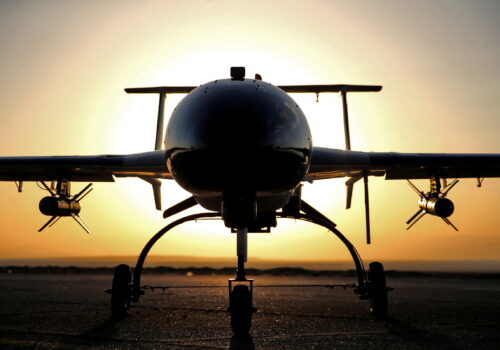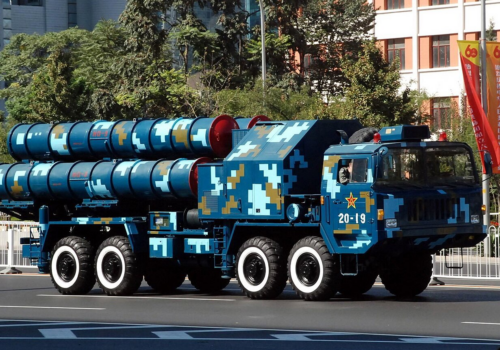What does Iran get for sending ballistic missiles to Russia?
Today, US Secretary of State Antony Blinken revealed that Iran has delivered close range ballistic missiles (CRBMs) to Russia, which he expects Russian forces will use against Ukraine within a matter of weeks.
At the same time, the US Department of the Treasury announced the imposition of additional sanctions on Iranian and Russian individuals and entities, including Iran Air. These moves can hardly come as a surprise to Moscow and Tehran and will not serve to get either to change course. The real question is how the Iranian transfer of CRBMs to Russia will affect the Russia-Iran relationship. Specifically: Does Russia’s dependence on Iran, first for armed drones and now for CRBMs, give Tehran a degree of leverage over Moscow? And what would Tehran want to get from Moscow with that leverage?
Iran has long sought Su-35 fighter aircraft and S-400 air defense missile systems from Russia, according to reports, but Moscow has not yet delivered them. As Hanna Notte and Jim Lamson noted in a study published in August, there are many other Russian weapons systems and technologies that Tehran would like to receive. If any of these turn up in Iran, this will be seen as evidence that the transfer of CRBMs to Moscow is indeed a sign of increased Iranian leverage over Russia.
Tehran, then, may see Russia not so much as a great power but as another proxy . . .
Moscow, though, will be loath to transfer weapons to Iran that would upset its ability to maintain good relations with Iran’s rivals, Saudi Arabia and the United Arab Emirates, which could in turn result in their turning closer to the United States and even Israel for support. Indeed, Iran itself might not want this to happen. Saudi-Russian cooperation in the OPEC+ format, which keeps world oil prices relatively higher, serves Iranian interests too. Both Russia and Iran have to sell their oil at a discount due to Western sanctions, but if the Saudis conclude that Russia has become Iran’s firm ally and so decide to increase oil production, the resulting lower oil prices would hurt both Moscow and Tehran. And they know that Riyadh has in the past been willing to flood the market and accept lower oil prices in order to hurt its rivals.
Further, while Tehran may want Moscow to transfer Su-35s, S-400s, and other weapons systems and technologies, receiving them immediately may not be the Iranian leadership’s primary goal. The Islamic Republic often does not take direct military action itself, but prefers to act through proxies, such as Hezbollah, the Houthis, and Iraqi and other Shia militia forces.
Tehran, then, may see Russia not so much as a great power but as another proxy, whose willingness to fight against a common enemy benefits Iran but allows it to avoid the costs of fighting that common enemy itself. Ukraine, of course, does not pose a threat to Iran. But to the extent that the United States and other Western countries devote attention and resources to supporting Ukraine, then they have less of these available for dealing with Iran.
Indeed, Tehran’s one great worry might be that Russia will lose its war with Ukraine, thus allowing the United States and its Western allies (as Tehran might fear) to concentrate on Iran. Transferring first armed drones and now CRBMs to Russia, then, may be seen as a good investment by Tehran whether it receives Russian weapons systems in return or not. This attitude would also be very much in keeping with how Iran prefers to support proxies that are fighting a common adversary rather than take on the fight itself.
Mark N. Katz is a nonresident senior fellow with the Atlantic Council’s Middle East Programs and professor emeritus of government and politics at the George Mason University Schar School of Policy and Government.
Further reading
Fri, Feb 2, 2024
Iran is on its way to replacing Russia as a leading arms exporter. The US needs a strategy to counter this trend.
IranSource By Danny Citrinowicz
The US must understand the seriousness of the situation: without active measures, it will be extremely tough to stop Iran from becoming a world leader in arms sales
Thu, Aug 15, 2024
Russian-Iranian military cooperation: How much can they depend on each other?
IranSource By Mark N. Katz
While the expansion of Russian-Iranian military cooperation might have already been in the works, these setbacks that Moscow and Tehran have experienced at the hands of US-backed Ukraine and Israel may only serve to increase it.
Tue, Sep 10, 2024
Russian and Chinese strategic missile defense: Doctrine, capabilities, and development
Issue Brief By Jacob Mezey
In a follow up to Matthew R. Costlow and Robert M. Soofer’s paper, US Homeland Missile Defense: Room for Expanded Roles, former Forward Defense Program Assistant, Jacob Mezey, seeks to inform debates about missile defense policy by placing arguments that US ballistic missile defenses are uniquely destabilizing in the context of efforts by Russia and China to deploy similar systems.
Image: Iranian surface-to-surface missiles are pictured in front of an Iran flag at the Islamic Revolutionary Guard Corps (IRGC) National Aerospace Park in western Tehran, October 11, 2023. The IRGC National Aerospace Park, showcasing the achievements of the IRGC Aerospace Force, was inaugurated on September 27, 2020, by IRGC Commander-in-Chief Major General Hossein Salami and IRGC Aerospace Force Brigadier General Amir Ali Hajizadeh. In February, the IRGC Aerospace Force commander announced Iran’s expertise in guiding solid-propellant missiles beyond the Earth’s atmosphere. (Photo by Morteza Nikoubazl/NurPhoto)


